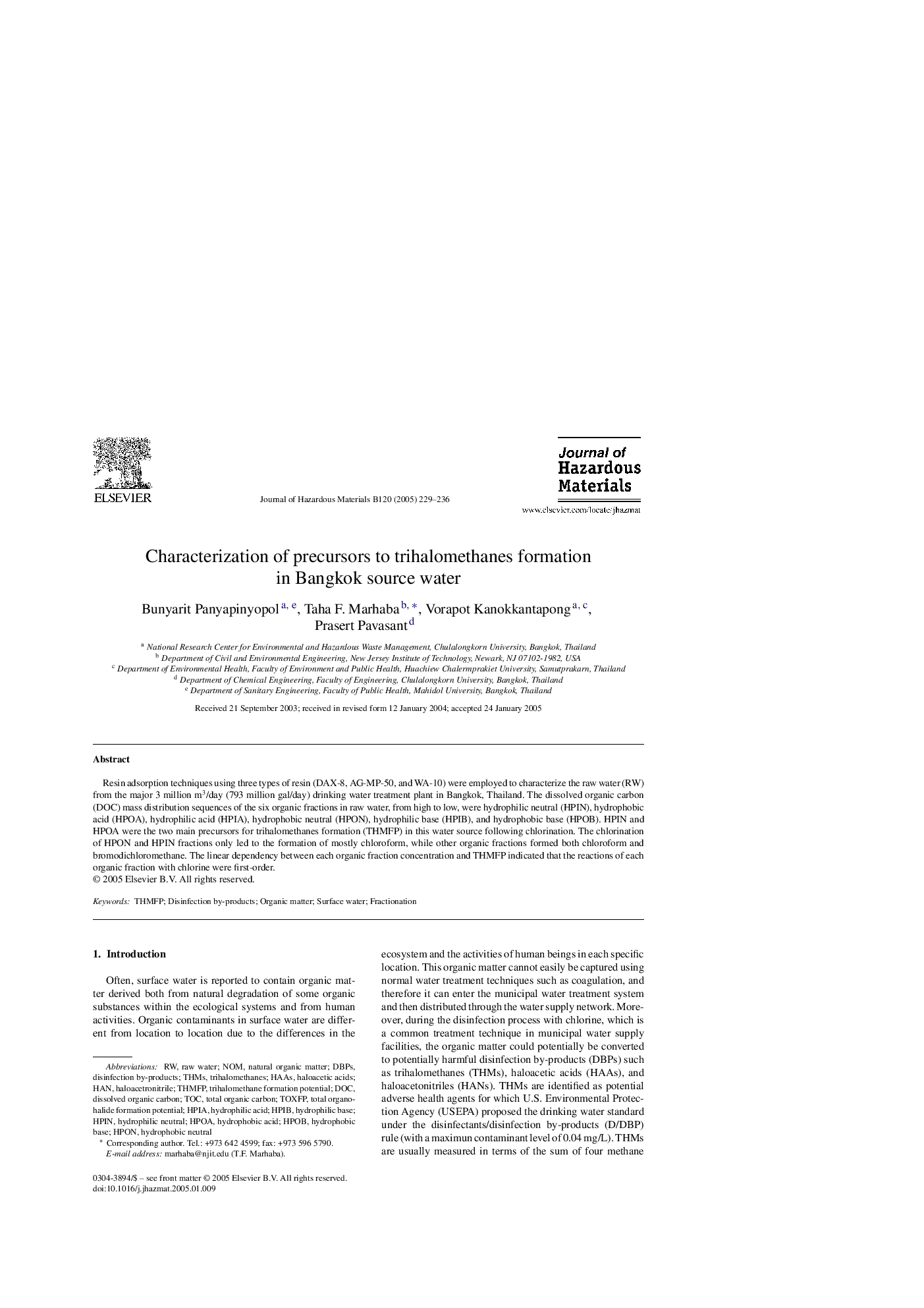| Article ID | Journal | Published Year | Pages | File Type |
|---|---|---|---|---|
| 9674322 | Journal of Hazardous Materials | 2005 | 8 Pages |
Abstract
Resin adsorption techniques using three types of resin (DAX-8, AG-MP-50, and WA-10) were employed to characterize the raw water (RW) from the major 3 million m3/day (793 million gal/day) drinking water treatment plant in Bangkok, Thailand. The dissolved organic carbon (DOC) mass distribution sequences of the six organic fractions in raw water, from high to low, were hydrophilic neutral (HPIN), hydrophobic acid (HPOA), hydrophilic acid (HPIA), hydrophobic neutral (HPON), hydrophilic base (HPIB), and hydrophobic base (HPOB). HPIN and HPOA were the two main precursors for trihalomethanes formation (THMFP) in this water source following chlorination. The chlorination of HPON and HPIN fractions only led to the formation of mostly chloroform, while other organic fractions formed both chloroform and bromodichloromethane. The linear dependency between each organic fraction concentration and THMFP indicated that the reactions of each organic fraction with chlorine were first-order.
Keywords
Related Topics
Physical Sciences and Engineering
Chemical Engineering
Chemical Health and Safety
Authors
Bunyarit Panyapinyopol, Taha F. Marhaba, Vorapot Kanokkantapong, Prasert Pavasant,
